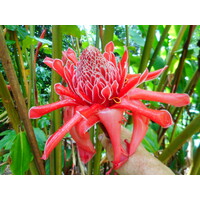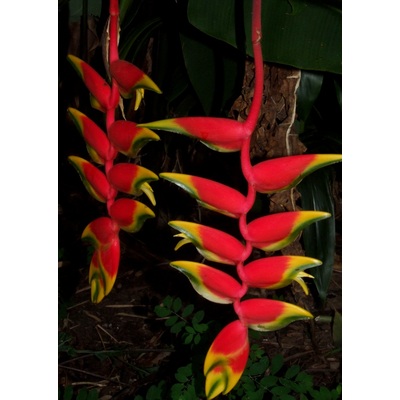Heliconia Care

In the garden nothing screams tropical like heliconias. There huge banana like leaves and striking inflorescence stop admirers in their tracks.
Heliconias are endemic to Mexico, Central/South America and the Caribbean. There is also another small group found in the Old World Tropics from Samoa to Indonesia. The old world heliconias have green bracts and are pollinated at night by bats in contrast to the colourful new world varieties that are pollinated primarily by hummingbirds. Heliconias grow in a surprising range of habitat from cool mountainous areas, to seasonally dry to the Amazon basin where some like H.standleyeii and H.marginata grow in water.
All of the Eastern coast of Queensland, northern stretches of New South Wales and the more humid parts of the Northern Territory are perfect for growing heliconias. With proper species selection and a good microclimate it is possible to grow heliconias in more marginal areas like Sydney.
Heliconias produce an underground rhizome root system. A rhizome is a section of root that will grow and eventually develop into a heliconia plant. Rhizomes can vary in weight and size depending on the variety and age of the plant.
The best time to purshase heliconias is generally in the spring if your night time temps drop below 16 degrees. This will give your rhizome time to develop and be planted out and establish before winter. You can purchase later in the season if you have a hothouse and are an experienced heliconia grower.
In general heliconias prefer full to part sun, high humidity, rich well drained soil containing lots of organic matter and generous amounts of water. Heliconias are heavy feeders and thrive with regular applications of fertilizer. There are exceptions to this and you’ll find individual cultural requirements on the heliconia plant profile pages of our online plant store. Heliconias generally will stop active growth under 16 degrees, at this time it is easy for them to rot if overwatered.
Plant your heliconia as soon as possible after receiving. We wrap our rhizomes in shredded newspaper soaked in a seaweed solution. This helps increase plant vigour. You can either pot up your plant in a free draining premium potting mix or plant directly into the ground. Either way only plant to the soil line on the rhizome, never plant too deep. Water with a weak seaweed solution whenever the top of the soil is dry to the touch. Soon the small eyes on the sides of the rhizome will develop into erect shoots that are composed of a soft stem enclosed in overlapping leaf sheaths. Each of these shoots will eventually produce a single inflorescence. The inflorescence is made up of colourful bracts that protect the small flowers. You can leave the inflorescence on the plant as often they will last for months. When they die it is a good idea to cut them back. This will increase air flow, promote new shoots and keep your plants tidy looking. Alternatively you can cut when between 3 and 5 bracts are out and enjoy in an arrangement.

Link to potting up heliconias
Happy Gardening! Ann










